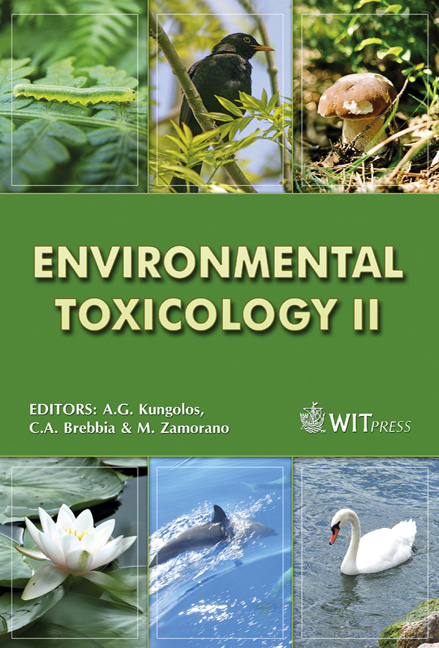Alkylphenols And Bisphenol-A And Its Chlorinated Derivatives In Adipose Tissue Of Children
Price
Free (open access)
Transaction
Volume
110
Pages
10
Page Range
129 - 138
Published
2008
Size
285 kb
Paper DOI
10.2495/ETOX080141
Copyright
WIT Press
Author(s)
N. Olea, J. P. Arrebola, J. Taoufiki, R. Fernández-Valades, R. Prada, N. Navea, J. M. Molina-Molina & M. F. Fernandez
Abstract
Bisphenol-A (BPA) is a plastic monomer and plasticizer used in the production of polycarbonate and epoxy resins. Alkylphenols are used as antioxidants and in the synthesis of industrial detergents, in toiletries, and as spermicides. Because of their endocrine disrupting properties, there is strong interest in studying their contribution to human exposure, especially in children. Octyl (OP) and nonylphenol (NP), bisphenol-A (BPA) and its chlorinated derivatives (Cl(x)BPA) were investigated in adipose tissue of 86 children in Spain. OP and NP were above the limit of detection (LOD) in 21 and 31 out of 86 samples, respectively. Means (SD) of OP and NP were 6.27 (6.63) and 38.27 (56.91) ng/g of adipose tissue, respectively. BPA was above LOD in 53 out of 86 samples (62%). Among Cl(x)BPA, Cl2-BPA was the most frequent (99%) and abundant, followed by Cl-BPA (64%) and Cl4-BPA (12%). Means (SD) of BPA, Cl-BPA, Cl2-BPA, Cl3-BPA and Cl4-BPA were 17.46 (14.82), 7.32 (4.26), 14.45 (9.79), 4.14 (1.35) and 3.54 (1.94) ng/g, respectively. There are no published data on alkylphenols and BPA in human adipose tissue or on Cl(x)BPA in adipose tissue or blood, limiting comparisons. However, these levels are higher than BPA concentrations reported to stimulate molecular endpoints in vitro and are at levels observed to induce effects in animal models. Further research is needed to explore their combined effects on children health, and to follow trends in human exposure if uses of these chemicals are to be regulated. Keywords: bisphenols, alkyphenols, children exposure.
Keywords
bisphenols, alkyphenols, children exposure.





